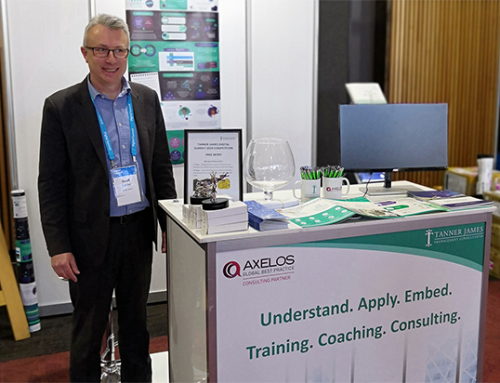The third principle to be covered in our AgileSHIFT blog series features the principle “Change will happen, so embrace it”. But before we dive into the principle and how an organisation can test it, we first need to step back and take a wider view of today’s business environment, and explore why both the organisation and its staff need to be comfortable with change. So let’s start with exactly what we mean by the statement “today’s business environment”.
In the AgileSHIFT guide, before detailing the actual framework, the guidance takes this same step back and provides the context to the changes many of us are seeing in our working lives. This is explained in the guide by using the concept of VUCA (which stands for volatility, uncertainty, complexity and ambiguity), a term used by many organisations today. If we look at each element individually we can begin to understand the challenges of operating in a “VUCA world”;
- Volatility: the nature and speed of changes occurring means that organisations will be impacted more frequently, and these changes will have a greater impact on their business. Companies that have survived for decades have seen their business disappear in a matter of months
- Uncertainty: what once kept organisations safe may no longer hold up. Increasing uncertainty around events, issues and outcomes is and will continue to provide a huge challenge for organisations about where to invest time and resources
- Complexity: the challenges faced by organisations today are more complex than ever before. Balancing multiple risks and opportunities will prove crucial for organisations to thrive in this new world
- Ambiguity: with more information available to organisations than ever before it has perhaps made finding clarity more difficult. With recent phenomena’s such as “fake news” growing in prominence it is crucial to cut through the noise.
These challenges have presented themselves in perhaps the area where we have seen the biggest impact caused to organisations; that is the technological revolution we have seen in recent years. New technology has affected nearly every part of our lives, and the workplace is no exception. We have seen new products, services and companies disrupt entire markets (look no further than Uber, Airbnb or Netflix), technology being leveraged to displace traditional roles (think AI and automation) and cultural shifts in how we approach work (flexible hours, remote working and bring your own device to name a few).
And yet, these changes I’ve mentioned are just the tip of the iceberg, with many more examples out there, and many more to come in the future. It is also not too much of a stretch to suggest that this pace of change will continue to increase in the coming years. In short, change will happen, so we need to be ready to embrace it. This is where we come back to our principle and why it is so important (it is the first principle listed in the AgileSHIFT guide). Organisations that embed a culture of accepting and embracing the opportunities that this changing environment offers will thrive in the future. Those who resist change will find themselves in a similar position to that of Kodak or Blockbuster.
So how can an organisation test whether or not it is following this principle? There are two key elements to test;
- Attitude to change: the first is assessing how people within the organisation react to change. This can be conducted through a number of methods from surveys through to simply observing how people respond when a change is introduced. Having a clear understanding of an organisations reaction to change will go a long way to improving the culture towards embracing change
- Ability (and desire) to drive change: a more mature organisation will actively encourage staff to identify and lead change within the organisation. This is a core concept within AgileSHIFT, and enables organisations to make internal improvements, as well as identify new products and services it could offer. An organisation which actively promotes these types of activities will constantly evolve to take advantage of new opportunities and adapt to the challenges it faces.
I hope you found the latest post in the series interesting and I would encourage you to check out the previous posts (Challenge the Status Quo and Tailor your Approach) if you haven’t done so already. We’ll be posting the next blog post in the series in the coming weeks.






Leave A Comment